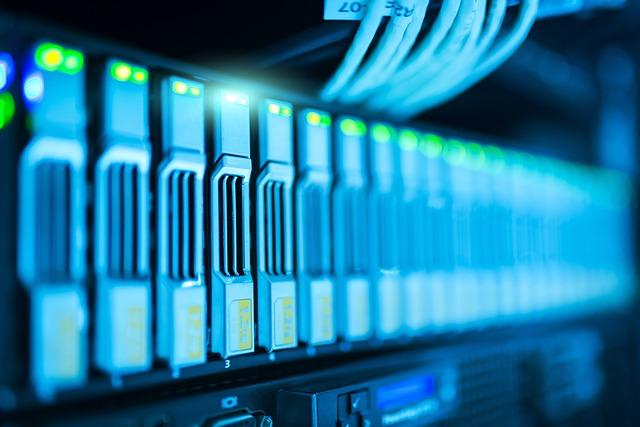What is a Security Operations Center (SOC)?
ISO 27001 requires the implementation of security measures. With NIS 2.0, many companies also need a SOC to respond to a dangerous threat situation in real time.
The meaning of the SOC abbreviation
The abbreviation SOC stands for the Security Operations Center of an organization. This is an organizational unit consisting of an information security team and special systems for attack detection. The SOC constantly monitors the security situation of an organization or company. Its job is to detect, analyze, and respond to cybersecurity attacks. Security teams use various security solutions to identify threats early. They follow procedural instructions and recommendations of the ISO 27001 and NIS 2.0 standards. There are also best practice methods that have proven themselves in practice. A SOC needs qualified employees. They must receive regular training. Due to the complexity of such a security center, the teams are usually divided into different roles. One team continuously monitors all activities at the boundaries of the organization as well as within its own network. One team takes on the role of the incident response team, which deals with security problems after they are discovered. Their job is to document the identified incidents and ward off threats.
Setting up a Security Operation Center
Setting up a Security Operations Center requires a corresponding number of employees as well as special technical infrastructure. Not all companies are able to meet the requirements of a Security Operations Center. The following aspects can prevent the introduction of your own SOC:
- lack of resources
- lack of specialist knowledge
- too few specialists
- too little time
- license costs that are too high
- operating costs that are too high
For many companies, it makes little economic sense to operate their own SOC. Nevertheless, companies can hardly do without the protective functions of a SOC. Using a SOC service together with other companies makes much more commercial sense, because the high start-up costs and operating costs are shared by the users. However, since you usually cannot contribute your own resources to a security center, using a SOC service from an external, trustworthy IT partner is the optimal solution. This is often referred to as “SOC as a Service” or the “Managed SOC service”.

The technology used in a SOC
Every Security Operation Center (SOC) requires special software and hardware. In the following part of this article, we present the most important technical components of a SOC. The large number of security events at the organization’s periphery requires a variety of support systems so that the specialists can keep track of the flood of activities. Many processes in a SOC must be automated. The SOC team must deal with the threatening events promptly and correctly. If the most important threats are not recognized and averted in time, the organization is at risk of major damage.
SIEM - Security Information and Event Management
A SIEM collects, analyzes and categorizes real-time data from a variety of sources. This gives you a realistic insight into the activities in the various areas within your network. The SIEM analyzes the data collected to identify potential threats in a timely manner. This enables the SOC security team to respond to threats promptly. With a SIEM, user-friendliness is very important, otherwise reports and events cannot be classified correctly. It is not easy to define use cases correctly. This often leads to discussions with the specialist departments and management as to whether these are abnormal events or whether the SOC’s results are viewed poorly. Acceptance of the SOC can suffer considerably if an unsuitable SIEM is used.
EDR - Endpoint Detection and Response
Alle Systeme und Geräte in einem Netzwerk können durch Cyberangriffe gegen die eigene Organisation verwendet werden. Ein EDR erkennt bösartige Aktivitäten und Software auf Endgeräten (Endpoints) der Organisation. Dabei ist ein EDR in der Lage, den Weg des Angreifers schritt für Schritt nachvollziehen. Dadurch können Sicherheitsteams auch im Nachhinein schnell verwundbare Lücken in der Infrastruktur identifizieren und nachhaltig schließen. Somit helfen EDR-Lösungen, die Bedrohung zu beseitigen und ihre Ausbreitung zu verhindern.
NGFW - Next-Generation Firewall
Eine klassische Firewall überwacht den ein- und ausgehenden Netzwerkverkehr. Dabei folgt sie recht starren Regeln. Moderne Angriffsszenarien können problemlos solche einfachen Firewalls überwinden. Dagegen handelt eine NGFW Firewall dynamisch und muss nicht unbedingt innerhalb ihres Standorts befinden. Einige Innovative NGFW arbeiten in der Cloud und können dennoch den eingehenden den Verkehr von hoch komplexen Angriffen trennen. Sie behalten vollständige Transparenz, Kontrolle und stärkere Prävention.
Automated application security
The software used in the organization must be checked for vulnerabilities. Application Security automates these software analyses. This provides the SOC security team with real-time information about vulnerabilities in the software used. Unprotected applications can be a gateway for cybercriminals and cyberterrorism. Typical cyberattacks are DDoS attacks, sophisticated SQL injections and malicious sources.
Security assessments
The security analysts of a SOC look for vulnerabilities in your IT infrastructure. At the same time, they compare the information from vulnerability databases. A successful security assessment should help the organization to maintain an appropriate level of security. Security incidents can lead to major damage (e.g. reputational damage, risk of litigation, insolvency). At the same time, you want to avoid data protection violations.
